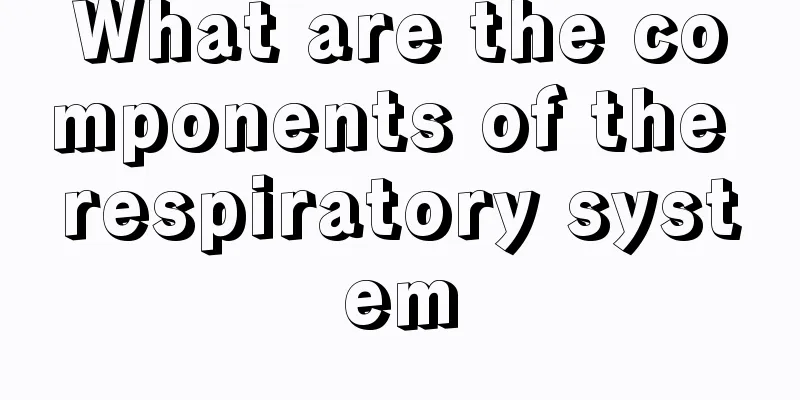What are food additives?

|
Many foods have additives, which can keep the quality, color, aroma and taste of food in a relatively good state. Preservatives are harmful to the human body. Therefore, it is best not to choose processed foods for daily consumption. Preservatives also need to be added in the preservation and processing processes. Nowadays, all kinds of foods have additives. What do food additives include? Let’s take a look at it next. 1. Preservatives are substances that extend the shelf life of food 1. Acidic preservatives: benzoic acid and its sodium salt, sorbic acid and its potassium salt, propionic acid and its salts. 2. Ester preservatives: parabens 3. Biological preservatives: mainly nisin, also known as lactic acid peptide (natural preservative) In order of toxicity from most to least: benzoic acid, parabens, sorbic acid. 2. Antioxidants 1. Butylated hydroxyanisole (BHA): Currently widely used at home and abroad 2. Butylated hydroxytoluene (BHT) 3. Propyl Gallate (PG) 4. Tertiary butyl hydroquinone (TBHQ): suitable for frying food 5. L-Ascorbic Acid 3. Colorants are also called color preservatives, which are substances that make food have a good color, such as sodium nitrate (potassium), sodium nitrite (potassium) and ferrous gluconate. 4. Bleaching agents, such as sulfur dioxide and sulfites, prevent food from browning and have a certain preservative effect . 5. Sweeteners 1. Natural sweeteners: sugar alcohols such as xylitol, sorbitol, and maltitol. Non-sugar alcohols, steviol glycosides, licorice, and miraculin. 2. Artificial sweetener: saccharin. 6. Colorants or pigments 1. Natural pigments: caramel, beetroot red, lycopene. 2. Synthetic pigments: amaranth, lemon yellow, indigo. 7. Definition of Food Additives The definition of food additives varies from country to country. The Joint Codex Alimentarius Commission of the Food and Agriculture Organization of the United Nations (FAO) and the World Health Organization (WHO) defines food additives as: Food additives are non-nutritional substances that are intentionally added to food, generally in small amounts, to improve the appearance, flavor, structure or storage properties of the food. According to this definition, food fortifiers intended to enhance the nutritional content of food should not be included in the scope of food additives! According to Article 99 of the Food Safety Law of the People's Republic of China, China defines food additives as follows: Food additives refer to artificial or natural substances added to food to improve food quality and color, aroma and taste, as well as for the needs of preservation, freshness and processing technology. 8. Features Food additives have the following three characteristics: First, they are substances added to food, so they are generally not consumed alone as food; second, they include both artificially synthesized substances and natural substances; third, the purpose of adding them to food is to improve the quality and color, aroma and taste of food, as well as to meet the needs of preservation, freshness and processing technology. |
<<: What are some tips for preventing oil from foaming?
>>: What should I do if there are mountain crickets at home
Recommend
What are the early symptoms of female brain cancer patients
As the number of cases increases and the number o...
What happens if you drink spoiled honey
Honey is one of the most popular products sold on...
How to trim eyebrows to look good
Although eyebrow tattooing can improve a person&#...
What's wrong with recurrent urinary tract infections
Urinary tract infection is a common clinical dise...
Disposable masks, how to use disposable masks,
Disposable masks are anti-toxic, anti-odor, and c...
What are the dietary taboos during the active stage of gastric cancer
Diet is very important for gastric cancer. The st...
Close your eyes to nourish your liver and shake your head to boost your spirits
To nourish the liver is to close your eyes As the...
What should I pay attention to after getting a tattoo
Many fashionable men and women prefer tattoos, wh...
What's going on with lower back pain and fever?
Fever occurs frequently in people, and it has a g...
What harm does copper powder do to the human body
Copper powder is a relatively common thing. It is...
Several types of surgery for epilepsy caused by brain cancer
As the disease progresses, brain cancer patients ...
Does staying up late cause spots?
Nowadays, people have a colorful life and often w...
How long after drinking water can I do an ultrasound
B-ultrasound is an examination that many people n...
Can Watermelon Frost Throat Lozenges treat rhinitis?
Watermelon frost throat lozenges are commonly use...
The efficacy of Bupleurum chinense bark
I believe that everyone does not have a clear und...









